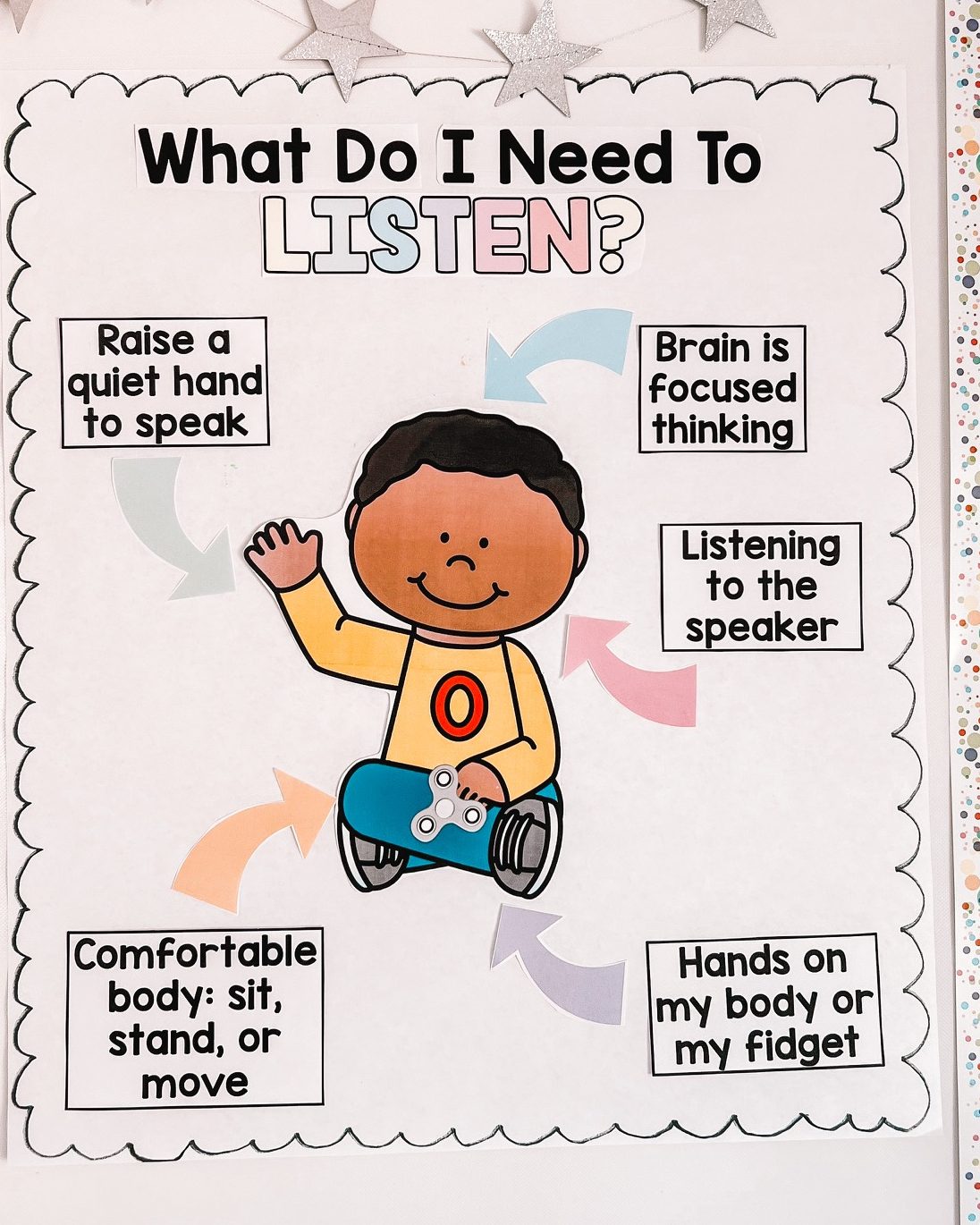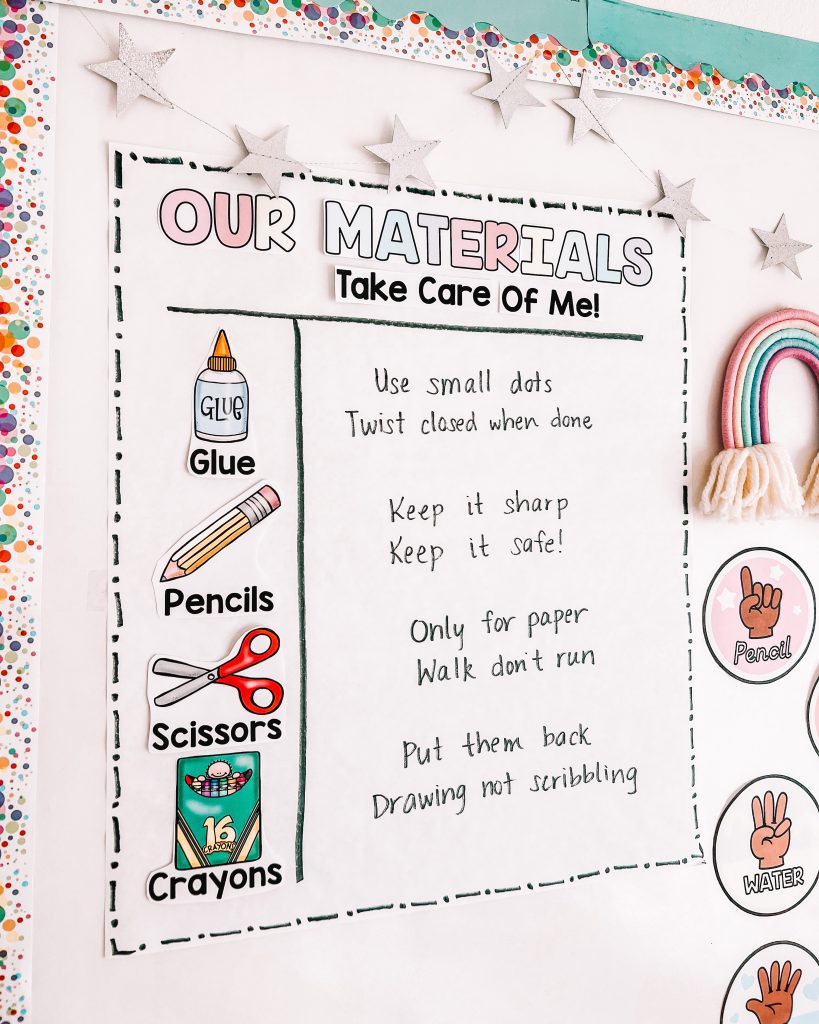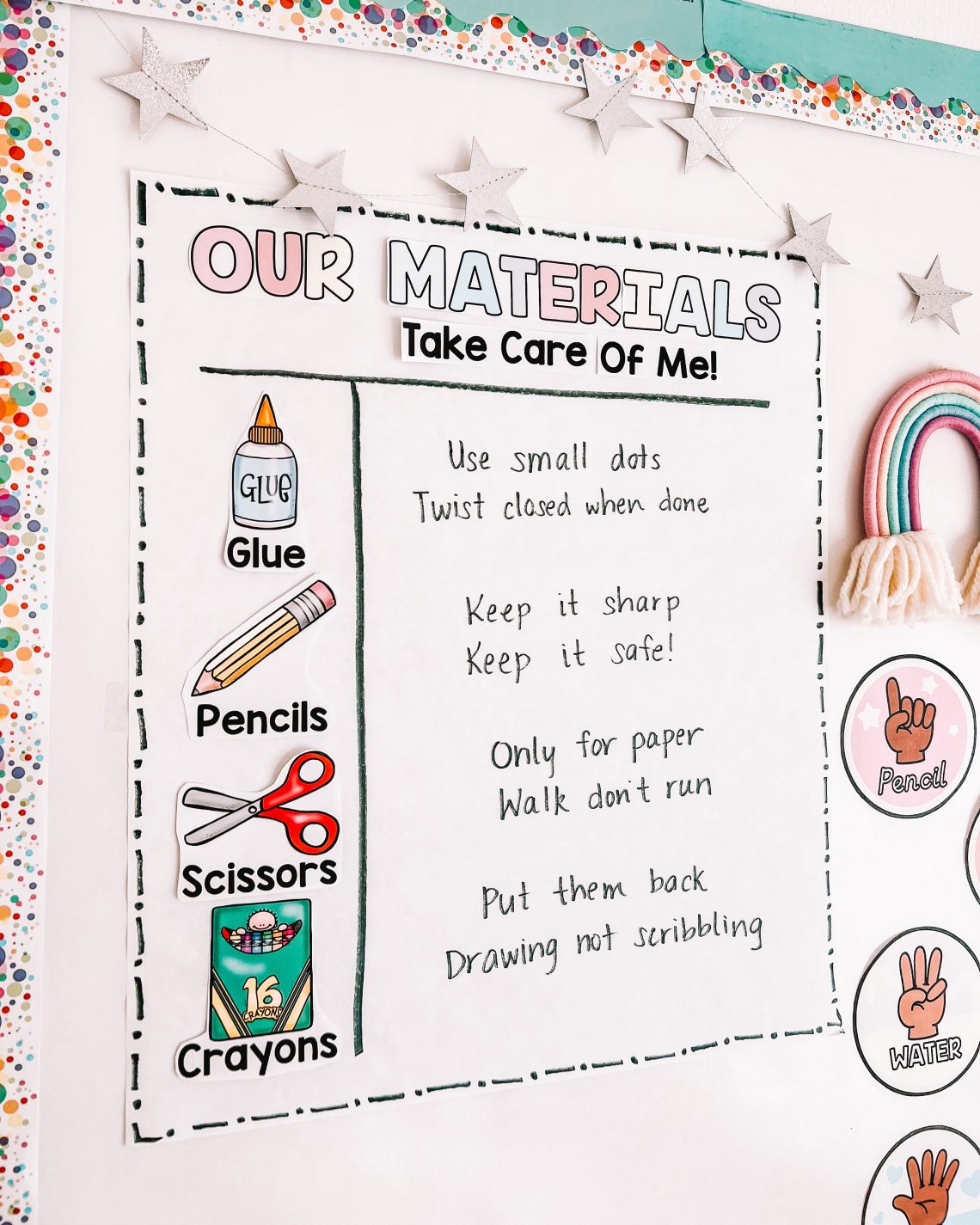How we teach classroom rules for elementary school is SO important for a smooth school year. Classroom rules might not sound exciting at first, but they’re the secret ingredient behind every successful school year. Think of them as the playbook that keeps your classroom running smoothly, especially during the chaos of the first week of school.
Whether you're setting up your first classroom or you're a seasoned teacher, clear rules make your job easier and the students' experience better. This blog post will walk you through the importance of creating rules, how to teach them, and practical tips to make sure they actually stick.
Ready to dive into the must-teach classroom rules for elementary school? Let's do it!
Looking for lessons and activities for teaching rules and routines? These are ready to print and go!
Click to jump to:
- The Importance of Establishing Clear Classroom Rules
- The Top 3 Classroom Rules For Elementary School and How to Teach Them
- Tips for Classroom Rules for Elementary School
- More Ideas to Reinforce Effective Classroom Rules
- Classroom Rules for Elementary School Are Crucial
The Importance of Establishing Clear Classroom Rules
The beginning of the school year is prime time to build the foundation for a positive learning environment. When you take time to establish clear guidelines and routines, you eliminate guesswork and reduce behavior issues before they start. That doesn’t just help with classroom management—it helps get your students ready to learn.
Effective classroom rules and routines…
- Help students feel safe and confident in your classroom.
- Support academic performance by reducing distractions and disruptive behaviors.
- Gives students structure, which lowers anxiety and boosts focus. (Kids, especially younger students, thrive on consistency.)
- Keep your classroom running smoothly during transitions.
When students walk into your classroom for the first time, they look for guidance. From the first day of school, they need to know where to sit, when to raise their hand, and what to do if they finish early. These small but essential routines help guide student learning and minimize confusion. Establishing classroom expectations early creates a strong rhythm that lasts the entire class period.
No matter your grade level, from younger classrooms to older students, setting clear expectations from day one is the foundation of effective teaching.
Elementary school students thrive when they understand the classroom procedures and what's expected of them. Without effective classroom rules, you're likely to spend more time managing behavior issues than delivering engaging lesson plans. And nobody wants that.
The Top 3 Classroom Rules For Elementary School and How to Teach Them
So what kind of classroom rules for elementary school work best? Here’s an in-depth look at the top three rules every elementary classroom needs. These aren’t just specific rules—they’re categories that guide student learning all year long. They serve as the pillars of good behavior, effective classroom management, and a positive classroom community:
- Classroom Values
- Lesson Expectations
- Routines & Procedures
Now let's dive into the best way to go about teaching theses crucial classroom rules for elementary school!
1. Classroom Values: Be Respectful, Responsible, and Ready to Learn
These values are the backbone of your classroom rules. You'll teach these first, and you'll keep returning to them throughout the school year.
- Respect means listening when others are talking, using kind words, and taking care of classroom materials.
- Responsibility includes coming to class prepared, owning up to mistakes, and doing your part in group work.
- Being ready to learn means bringing a positive attitude and staying engaged.
How to Teach It: Creating a classroom promise is my favorite way to teach these core classroom values. Here's how to do it:
- Have students brainstorm what respect, responsibility, and readiness look like in action.
- Reveal your classroom promise and read through each value, relating them to what students had suggested in their responses.
- Have each student sign or decorate a handprint to go around the class promise, representing their agreement to follow those values in the classroom.
2. Lesson Expectations: Follow Directions the First Time
One of the most important classroom rules for elementary school is your rules for students while teaching is happening. Clear expectations around lessons make for effective teaching. Whether it’s during math, reading, or a science experiment, students need to understand that instructions matter. These expectations need to be reviewed frequently, especially at the beginning of the year.
How to Teach It: I love using this inclusive whole body listening chart for helping students understand their job during lessons. The visual makes it super clear what the expectations are, but there is enough flexibility to make it inclusive for student with different learning needs. Here's how to use it:
- Ask students what they think their bodies should be doing while you're teaching. What should their eyes be doing? Their ears? Their hands?
- Then show the anchor chart, and go through each body part and what the expectations are.
- Explain that our bodies might need different things. One person might learn best criss-cross applesauce, and another person might learn best in a chair at their table.
- Invite students to think about what they need in order to do their best learning. Then have them draw it out using the craft template.


You can get this anchor chart template and companion craft right here in my TPT store.
3. Routines: Know What to Do and When to Do It
Routines are the backbone of classroom rules for elementary school. Think lining up for recess, turning in homework, or putting away art materials. When kids know what’s expected, transitions become smooth and drama-free. But it takes plenty of practice and review.
How to Teach It: Teach each routine like it’s a lesson plan. Break it down into steps. Practice it with small groups or the entire class.
- Make a list of all your routines and transitions throughout the day. It will be a loooong list. (Morning entry, turning in work, transitioning from lessons to independent work, using to the bathroom, cleaning up for recess, lining up after recess, storing materials, walking to and from specials…. you get the idea!)
- Really think through each routine and how you want it to look in your classroom.
- Choose a handful of routines to teach each day during the first two weeks of school, and plan to review them many times.
Here are some tips for teaching routines:
- Be sure to explain the purpose behind each routine—students are more likely to follow them when they understand the why.
- Model what following directions looks like. Role-play both correct and incorrect behavior.
- Use positive reinforcement when students follow directions right away. This helps prevent behavioral issues before they escalate and keeps lessons on track.
- Use hand signals or call-and-response cues to maintain student attention throughout the class period.
- Anchor charts work well here too. Create a visual checklist of what to do when given instructions.




Tips for Classroom Rules for Elementary School
Here are some effective methods to make your classroom rules for elementary school work like a charm:
- Keep It Short: Your list of rules should be 3–5 max. More than that, and students (especially younger classrooms) will forget them. This also makes the rules easier to review and memorize.
- Use Visuals: Anchor charts, hand signals, and posters help reinforce the rules for visual learners. Display them on your bulletin board and refer back often.
- Make It a Class Project: Let students help create the rules. This rule-making process gives them a sense of ownership, which boosts buy-in. It also supports classroom discussions and encourages a positive classroom community.
- Practice, Practice, Practice: Just like multiplication tables, class rules need repetition. Go over them every day during the first week of school and revisit regularly. Use class meetings to review what’s working and what needs adjusting.
- Use Positive Reinforcement: Celebrate good behavior with praise, stickers, or class points. It’s an effective classroom management tool, and it encourages students to keep it up. Reinforcement doesn’t always have to be physical rewards—public praise or a quick call home goes a long way too.
- Adapt to Your Grade Level: Effective rules for first graders look different from those for older students or middle school. Tailor your set of rules to fit your group. For instance, high school students might handle more abstract guidelines, but elementary students need specific rules like “Raise your hand before speaking.”
- Stay Consistent: Consistency is everything. If a rule exists, it needs to be enforced every class period, for every student. Inconsistent enforcement undermines your credibility and opens the door to behavior issues.
- Update as Needed: Sometimes the best classroom rules need a refresh. Mid-year is a good time to check in with your class and tweak rules if needed. Classroom behavior can change over time, especially after winter break.
- Tie Rules to a Bigger Purpose: Explain how rules help create a positive learning environment where everyone can succeed. When students see rules as tools for success rather than punishment, their attitude changes.
- Display Rules Clearly: Post your classroom rules somewhere highly visible. Your bulletin board, whiteboard, or near the door are all great options. Use large, bold fonts and kid-friendly language.
- Connect Rules to Real-Life Skills: Explain how being respectful and responsible now helps them become trustworthy friends, leaders, and citizens later. Even elementary students appreciate being treated like future grown-ups.
More Ideas to Reinforce Effective Classroom Rules
- Daily Rule Reminders: Use morning meetings to highlight one rule per day. Relate it to the day's lesson plans or upcoming events.
- Weekly Celebrations: Choose a student who modeled the class rules and celebrate them with a small certificate or extra privilege.
- Storytime Tie-ins: Use books and stories that reinforce themes of good behavior and clear expectations. Discuss how characters follow or break rules.
- Interactive Games: Play rule-themed games during the first week of school to build engagement. Think Simon Says with class rules or matching activities.
- Rule Review Videos: Record your class acting out the rules and play it back. Let students become the role models for each other.
- Parent Involvement: Share your rules and classroom procedures with parents during open house or through a newsletter. Encourage them to reinforce expectations at home.
Classroom Rules for Elementary School Are Crucial
Classroom rules for elementary school aren’t just about control—they’re about creating a safe, supportive, and positive classroom community. With clear rules, strong routines, and a dash of creativity, you’re setting your students up for a successful school year.
From the first day of school to the last bell rings, rules and routines shape your classroom behavior and guide student learning. Whether you’re in your first classroom or your fifteenth, using effective classroom rules for elementary school is always a good idea.
Effective rules do more than keep the peace—they make room for learning, laughter, and community. So tape those rules to your bulletin board, practice them every morning, and enjoy the magic that happens when your students know exactly what to do and how to do it.
Here’s to a productive learning environment, a positive classroom community, and your best school year yet. With a thoughtful list of rules, consistent classroom procedures, and creative strategies to boost student behavior, you're building something amazing.
Whether you're a new teacher figuring out your classroom management style or a veteran looking to improve your ground rules, this blog post should be your go-to guide. From the first week of school to the end of the year, the rules you set today will shape the learning that happens tomorrow.
Classroom rules for elementary school aren’t just a checklist—they’re your roadmap to an effective, joyful, and well-run classroom. So go ahead: write those rules, model them proudly, and let your students thrive!
Which of these tips are you most excited to try in your classroom? Let me know in the comments! xoxo Laura
Resources For You:



Articles For You:
How To Teach Classroom Rules Students Will Actually Follow
Classroom Rules and Routines: The Ultimate List of Children’s Books
5 Must-Try Classroom Routine and Procedures Ideas
21 Amazing Ideas For Activities On The First Day Of School










No Comments